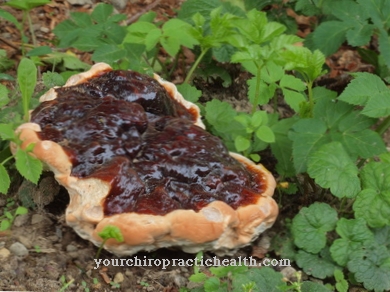In most cases there are effective alternatives to conventional medicine. These often get by without chemical additives and are less likely to cause side effects. So the leaves of the Damiana for example, can be used as a natural aphrodisiac.
Occurrence & cultivation of the Damiana

The Damiana belongs to the genus of saffron mallow. It originally comes from America. Here it grows from the southern part of North America to the areas of Argentina. From the outside, the plant looks like a shrub with many branches. Overall, the Damiana reaches a height of about one to two meters. The leaves and branches have fine hairs or fluff. There is no uniform leaf shape and size.
Instead, the leaves vary in their external appearance, but are all about 1 to 2 inches long. The edge of the leaves usually has indentations, the surface fine ribs. Leaf hairs can often be found in the region of the leaf veins in particular. The Damiana has flowers. These are bright yellow and bloom throughout the summer. The petals only disappear towards autumn.
Overall, the length of a flower is around four to eight centimeters. In its center it bears a fragrant capsule fruit. Their taste is reminiscent of figs. Damiana prefers open spaces with plenty of sun. The shrub can be localized to a greater extent, particularly in rocky locations and at high altitudes. Northern Mexico in particular has the largest populations of the plant, which is only slowly gaining popularity in Europe.
Effect & application
Damiana can be used for various ailments. The plant is used particularly often as an aphrodisiac. In addition, the ingredients also have a slight laxative and mood-enhancing effect. They can relieve anxiety and induce relaxation. Already in the history of the Maya the leaves were prepared in different ways and used medicinally by the population.
It is now possible within Europe to buy the dried ingredients or to get your own damiana bush. In most cases, the application takes place in the form of a tea. To do this, about 2 to 4 grams of the dried leaves should be placed in hot water. After a few minutes, the remaining components can be removed. The tea should be drunk three times a day. Experience has shown that the effect only works optimally when the hot liquid has been consumed daily for a week.
It is also possible to make an alcoholic tincture from the components of the plant. Homemade vodka is mostly used. The alcoholic extracts can usually be purchased ready-to-use. In the home countries of the Damiana in particular, the leaves of the shrub are used to flavor alcoholic beverages, for example. In addition, the inhabitants smoke parts of the Damiana. The forms of administration are therefore very diverse.
The ingredients that determine the medicinal properties of the plant are crucial. These are mainly terpenes and essential oils. The terpenes include caffeine, tannin and thymol. Not all effects of the Damiana are based on scientific studies. Instead, the plant is used in particular in the context of homeopathy or recommended based on experience. Most of the scientific experiments took place with animals.
Importance for health, treatment & prevention
Damiana can be used to treat physical and mental ailments. The ingredients work against anxiety disorders and support the onset of a state of relaxation. The anxiety-relieving property has only been shown in tests with solutions that were produced with methanol. The preparation is said to cause a moderate euphoria.
It is used in this form especially for existing menstrual cramps, prostate disorders, tension, nervousness and insomnia. Damiana is also used for infectious diseases in Mexico in particular. The ingredients are antibacterial and can therefore be used for colds, inflammatory diseases, but also for infections of the respiratory and digestive organs.
In addition, the treatment of diseases of the genital organs, such as kidney and bladder catarrh, is not unusual in home countries. The substance arbutin should be decisive for the disinfecting effect. The relaxing properties of the leaves also reach the smooth muscles in the area of the internal organs. In this way it is possible for the plant to relieve severe abdominal pain. At the same time, the ingredients promote the resolution of inflammatory diseases in the stomach and intestines. Damiana is also used in some cases to stimulate appetite.
As an aphrodisiac, Damiana is used to treat and preventive. It should avoid a loss of libido in men and women, but also alleviate existing sexual disorders. The effect is said to be based on an increased sensitivity of the skin and better blood circulation in the abdomen. However, there is not yet enough data from scientific studies to unequivocally confirm the assumptions.
According to experience, Damiana is said to be an effective aphrodisiac, which the Maya already used. The aphrodisiac properties should go so far that they also have an effect on impotence. Damiana is therefore a herbal product that can serve numerous medicinal purposes. Side effects are not yet known, but it is not recommended to exceed the recommended dosage. People with liver diseases as well as pregnant and breastfeeding women should avoid the components of the shrub.

























.jpg)


